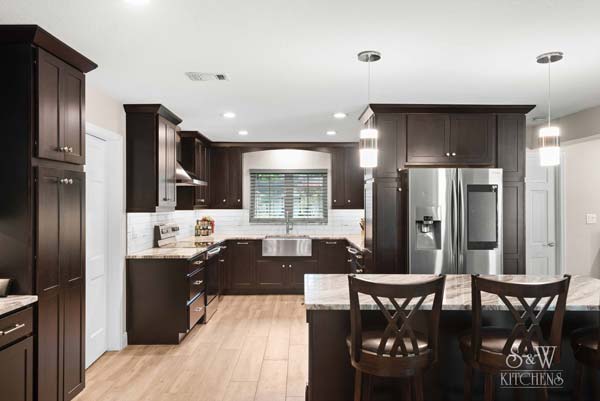You’ve purchased your new place and are eager to get to work on transforming it into your dream home. You have a list of renovations to get through but are confused about whether to get started with it before or after moving in. Here we will take a look at some of the pros and cons of each option to help you with your big move.

Why you might want to get the remodeling done before you move in.
The work is large scale or in critical areas of the house.
The type and extent of the renovations are both key considerations that should factor into your decision. Some projects may be better completed when the house is unoccupied, as they can create a lot of mess, noise, or both. These are things like refinishing hardwood floors, painting large areas of the house, or carpeting.
Where in the house the remodeling is occurring is also important to think about. If you plan on having extensive work done on vital areas such as the kitchen or bathroom, this will naturally make it much more difficult for you and your family to live there while the work is in progress.
The work is necessary to make the house safe and functional.
With some remodeling, it makes sense to get it done as quickly as possible. For instance, jobs that are required to make the space safe and functional, e.g., roofing, wiring, and plumbing, or ones that would limit your access to the whole house for long periods. These are all better completed before you move into your new place.
Other jobs can more easily be delayed until afterward. However, you do need to consider the impact on you and your family’s lives based on the type of work being done . Plus, certain renovations might not be ideal to carry out with young children or pets around for reasons of safety, convenience, and comfort.

Why you may want to wait until you are there.
To ensure renovations are both necessary and suitable.
While the temptation might be strong to get everything done and dusted before moving in, it might be wiser to leave off on non-essential remodeling until a little later. You are likely basing your renovation ideas on the layout of your previous house, so any adaptations made may not work as well here as they would have there.
Your thoughts on what you want to do with the place might also change once you have been living there a while and have become more familiar with the general layout of the house. When you have an idea of exactly how you want to use the space, what works and what doesn’t, you may find you suddenly have an entirely different perspective on things.
To save money and track the progress of the remodel.
A final consideration is that if you hold off on moving into your new place for a while, you will likely find yourself covering the cost of two properties – either your previous home or rented accommodation. This could leave you quite a bit out of pocket if the remodeling takes longer than expected, especially if you are also paying to store furniture.
Living in your new house while having the work done means avoiding all of these additional costs. It also allows you to more easily keep an eye on how renovations are progressing. This helps you to determine whether or not you want to go through with any additional remodeling that you had in mind before moving in.
